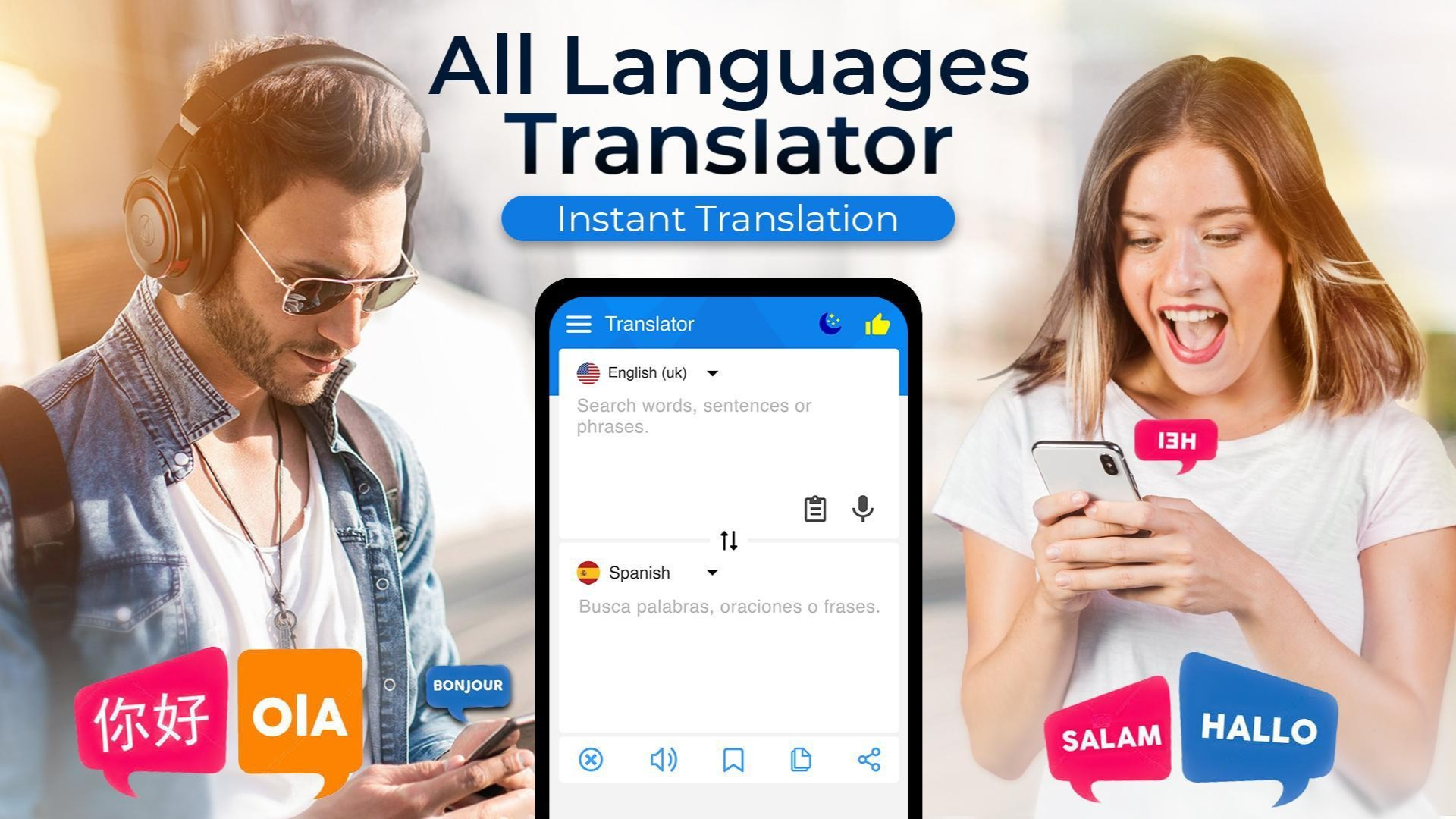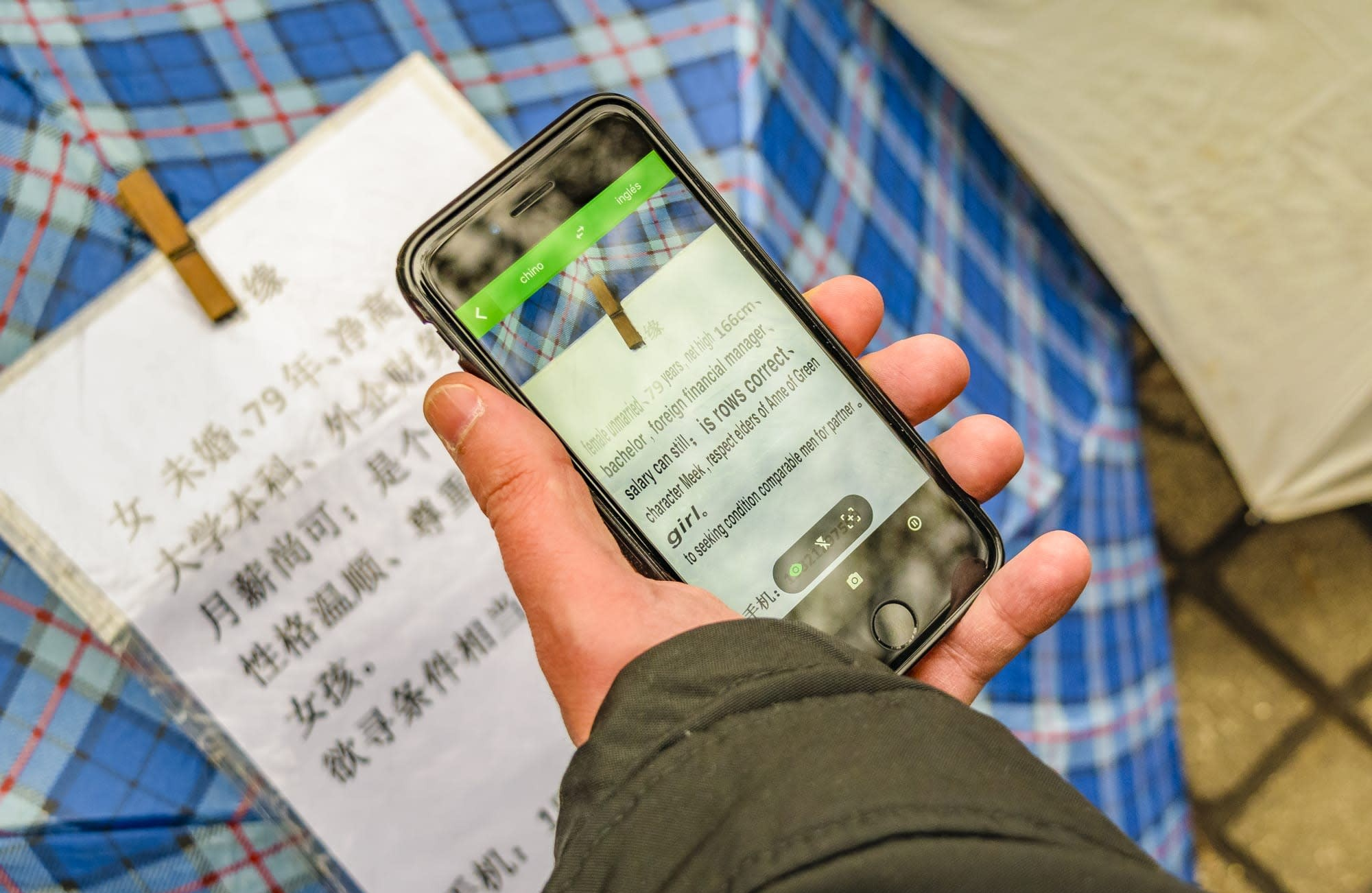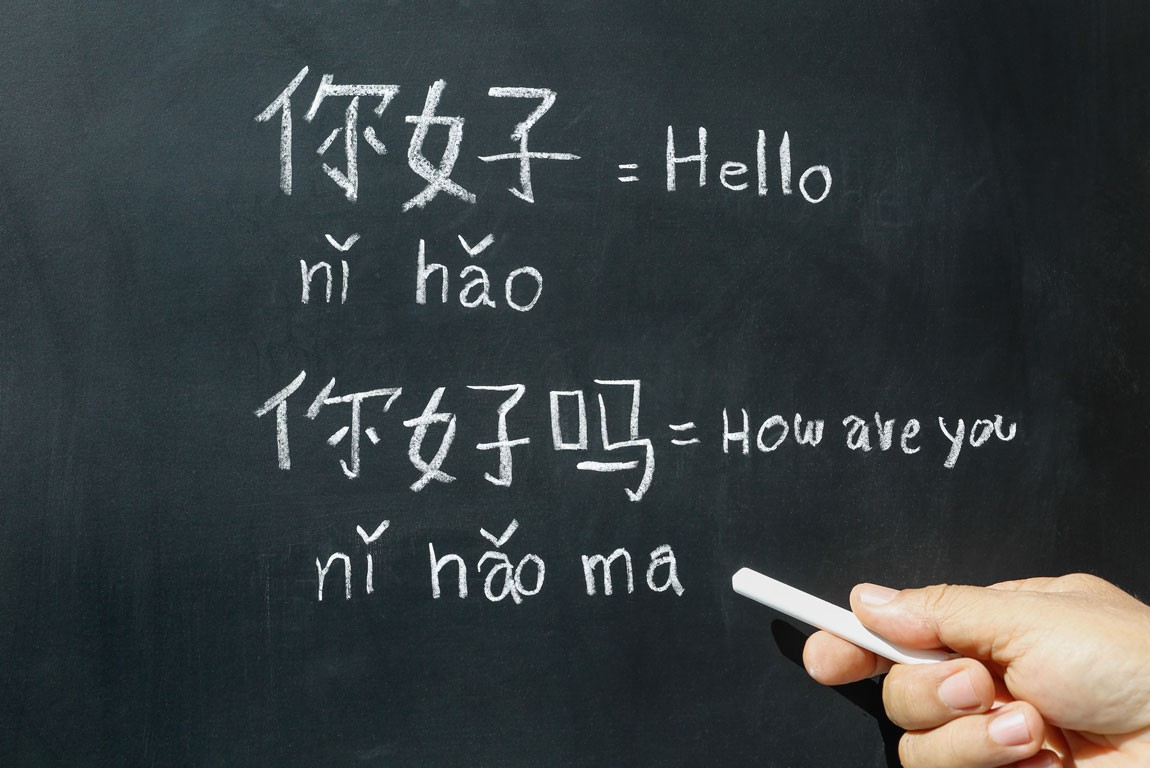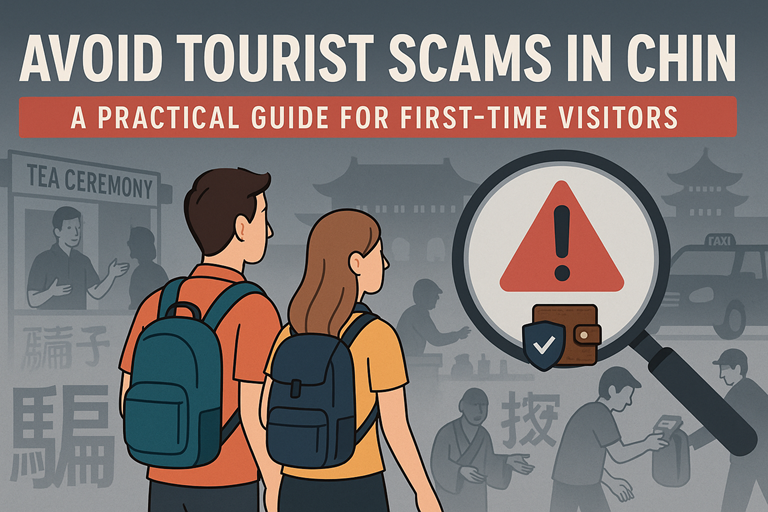Language Barriers in China?
The Best Offline Translation Tools & Useful Phrases for Your Trip
Navigating China can be an incredibly rewarding experience, but for many international travelers, the language barrier presents a significant hurdle. While English proficiency is growing, especially in major cities and tourist hotspots among younger generations and those in the hospitality industry, you will inevitably encounter situations where Mandarin Chinese (Putonghua) is the only language spoken.

Language barriers are common but manageable with the right tools
Don’t let this deter you! With a bit of preparation, the right tools, and a willingness to communicate, you can successfully navigate these challenges. This guide focuses on offline translation solutions – crucial for when you don’t have Wi-Fi or a stable data connection – and a list of practical phrases to help you along the way.
The Great Firewall (GFW)
Many online translation services you might rely on (like the standard Google Translate website) are blocked or unreliable without a VPN.
Connectivity Issues
Even with a local SIM card or roaming, data coverage can be spotty in rural areas, inside large buildings, or on certain modes of transport like subways.
Cost Savings
Relying solely on roaming data for translation can become expensive.
Battery Life
Constant data used for online translation drains your phone battery faster.
“Having robust offline translation capabilities ensures you can communicate basic needs, understand signs, and ask for help regardless of your internet access.”

Offline translation apps work without internet access
Google Translate (with Offline Mode)
How it works offline: Google Translate allows you to download language packs for offline use. Once the Chinese (Simplified) pack is downloaded, you can perform text translation, and importantly, use the camera translation feature (Word Lens) without an internet connection.
Strengths:
- Excellent Camera Translation (Word Lens): Point your phone camera at Chinese text (menus, signs, product labels), and it will overlay the translation in English on your screen. This is a game-changer.
- Text Translation: Type or paste text for translation.
- Phrasebook: Save frequently used translations.
Setup for Offline Use (Do this BEFORE your trip or while on Wi-Fi):
- Open Google Translate app.
- Tap the menu (three horizontal lines) or your profile icon.
- Select “Offline translation” or “Downloaded languages.”
- Find “Chinese (Simplified)” in the list and tap the download icon next to it. (The file size can be substantial, so use Wi-Fi).
- Ensure English is also downloaded if it’s your primary language.
Limitations Offline:
- Conversation mode (real-time voice translation) typically requires an internet connection.
- The quality of offline translation might be slightly less nuanced than online.
- Remember, Google services require a VPN to function for updates or online features while in China.

Google Translate’s camera feature is invaluable for menus and signs
Baidu Translate (百度翻译 – Bǎidù Fānyì)
How it works offline: Similar to Google Translate, Baidu Translate offers downloadable offline language packs.
Strengths:
- Optimized for Chinese: Being a Chinese app, it’s often very good with colloquialisms, modern slang, and context-specific translations.
- Comprehensive Features: Offers text, voice (may have limited offline voice capabilities depending on the version), and image/camera translation.
- No VPN needed: Works directly in China without a VPN.
Setup for Offline Use:
- Download and open the Baidu Translate app.
- Look for a settings menu (often a gear icon or “Me/我的” section).
- Find an option like “Offline Packages” (离线包 – Líxiàn bāo) or “Offline Translation.”
- Download the Chinese-English (and English-Chinese) offline package.
Interface:
Generally available in English, making it user-friendly for international visitors.
“Baidu Translate is often more accurate than Google for Chinese-specific phrases and idioms, though its English interface might not be as polished.”
Comparison: Google Translate vs Baidu Translate
- Google: Better English interface, more familiar to Western users
- Baidu: Better Chinese translations, no VPN needed
- Both: Offer offline modes, camera translation
Pleco
How it works offline: Pleco is primarily an exceptional Chinese-English dictionary app that works entirely offline once installed. While not a sentence translator in the same way as Google or Baidu Translate, it’s invaluable for understanding specific words and characters.
Strengths:
- In-depth Dictionary: Provides detailed definitions, example sentences, character stroke order, and audio pronunciation by native speakers.
- Optical Character Recognizer (OCR): A powerful paid add-on (highly recommended) allows you to point your phone’s camera at Chinese characters (or use a still image) and tap on them to get instant definitions. This is incredibly useful for menus, signs, and documents.
- Handwriting Input: Draw characters you see to look them up.
- Document Reader: Paste text into it to get word-by-word breakdowns.
Use Case:
Best for when you need to understand a specific word or phrase accurately, or when you’re trying to learn the language. Less for quick conversational exchanges.
Setup:
Download the app. Consider purchasing the Basic Bundle or OCR add-on for full offline functionality. All core dictionary functions are offline by default.

Pleco is the gold standard for Chinese-English dictionaries
Microsoft Translator
How it works offline: Also offers downloadable language packs, including Chinese (Simplified).
Strengths:
- Good Text and Camera Translation: Similar features to Google Translate.
- Conversation Mode: Its multi-device conversation mode is interesting, though often requires an internet connection. Check offline capabilities for basic conversation.
- Phrasebook: Pre-loaded with useful phrases.
Setup for Offline Use:
Similar to Google Translate – navigate to offline languages in settings and download the Chinese pack.
Tips for Using Offline Translation Apps Effectively:
- Download Language Packs in Advance: Don’t wait until you arrive in China.
- Keep Sentences Short and Simple: Complex grammar or long sentences are harder for apps to translate accurately.
- Use Keywords: Sometimes translating just the key words is more effective.
- Translate Back: Translate your English phrase into Chinese, then translate the Chinese result back into English to see if it makes sense.
- Camera Translation is Your Friend: Especially for menus and signs where typing is impractical.
- Show, Don’t Just Speak (the translation): Let the other person read the translated text on your screen.
- Be Patient: Translation isn’t always perfect. Use it as a tool to aid understanding.
- Combine with Gestures: Pointing and other non-verbal cues can help clarify your meaning.
Even with the best apps, knowing a few basic phrases will go a long way in showing respect and facilitating simple interactions. Pinyin is the official romanization system for Mandarin Chinese. Tones are crucial for meaning; here, they are indicated by numbers (1: high flat, 2: rising, 3: falling-rising, 4: falling, 5: neutral).

Even basic phrases can greatly enhance your travel experience
A. Greetings & Basic Politeness
B. Numbers
C. Directions & Transportation
D. Shopping & Ordering Food
E. Help & Emergencies
F. Other Useful Phrases

Having key phrases written down can be very helpful
Learn Pinyin and Tones
Even if you only learn a few phrases, understanding Pinyin and the concept of tones will drastically improve your pronunciation and ability to be understood. Many apps (like Pleco) have audio pronunciations.
Use a Phrasebook App or Physical Book
Having phrases readily available, categorized by situation, is helpful. Many travel guidebooks also include a basic phrase section.
Point and Gesture
Don’t underestimate the power of non-verbal communication. Pointing at items on a menu, using hand gestures for numbers, or mimicking actions can often get your message across.

Show Addresses in Chinese
Have your hotel address, attractions, or restaurants written in Chinese characters (e.g., a screenshot, a note from your hotel). This is invaluable for taxi drivers. Your map app (Amap, Baidu Maps) can usually display this.
Use Pictures
If you’re looking for a specific item in a shop, having a picture of it on your phone can be very effective.
Be Patient and Smile
A friendly demeanor and patience go a long way. Most people will try to help if they can, even if there’s a language barrier. Frustration rarely helps.
“In my travels across China, I’ve found that a smile and basic attempt at Mandarin often leads to warm interactions, even when communication is limited.”
Additional Communication Strategies
- Look for Younger People or Staff at Tourist Sites: They are more likely to have some English proficiency.
- Utilize Hotel Staff: Your hotel concierge or front desk staff can be a great resource for writing down directions in Chinese, helping make reservations, or clarifying information.
- Embrace the Challenge: See it as part of the adventure! Each successful communication, no matter how small, can be a rewarding experience.
- Don’t Be Afraid to Make Mistakes: People will generally appreciate your effort to speak their language.
- Carry a Pen and Small Notepad: For writing things down (numbers, prices) or for others to write Chinese characters for you to look up later or show to someone else.
(Less Common for Tourists, but Good to Know)
For complex situations (business negotiations, legal matters, serious medical issues), apps and basic phrases won’t suffice.
Professional Interpreters
Can be hired for specific needs, usually through agencies.
Hotel Concierge
For more complex tourist-related requests, they might be able to offer more nuanced assistance.
Friends or Contacts
If you have local friends or contacts, they can be invaluable.

While the language barrier in China is real, it’s far from insurmountable. By equipping yourself with the right offline translation tools, learning a few key phrases, and approaching interactions with patience and a positive attitude, you can navigate the country effectively and enjoy a richer, more immersive travel experience.
“The effort you put into bridging the communication gap will often be met with warmth and appreciation, opening doors to more authentic interactions and a deeper understanding of this fascinating country.”
Final Checklist Before Your Trip
- Download and test your chosen translation apps
- Install offline language packs
- Learn 10-20 basic phrases
- Save important addresses in Chinese
- Prepare backup power for your devices
- Pack a small notebook and pen

With the right preparation, language barriers won’t stop you from enjoying China’s rich culture
Enjoyed this article? Consider buying me a coffee to support more content like this!
💖 0 people have clicked to support this article.


